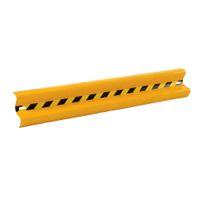Call +(254) 703 030 000 / 751 483 999 / 721 704 777
- Home
- Material Handling
.....Read More
Frequently Asked Questions
What is material handling?
Material handling refers to the movement, protection, storage, and control of materials and products throughout the manufacturing, warehousing, distribution, and consumption processes. It encompasses a wide range of activities, from simple manual lifting to complex automated systems, with the goal of improving efficiency, reducing costs, enhancing safety, and minimizing damage to goods. Effective material handling optimizes workflow, space utilization, and inventory management, ultimately contributing to a streamlined and productive supply chain. It is a critical component of logistics and operations in various industries.
What are the types of material handling equipment?
Material handling equipment broadly categorizes into four main types: transport, unit load formation, storage, and automatic identification and data collection (AIDC) equipment. Transport equipment, like forklifts, conveyors, and automated guided vehicles (AGVs), moves materials between locations. Unit load formation equipment, such as pallets and containers, groups individual items into larger, easier-to-handle units. Storage equipment, including racks and shelves, holds materials for various durations. AIDC equipment, like bar code scanners and RFID systems, identifies and tracks materials, enhancing efficiency and accuracy in logistics and manufacturing.
What are the principles of material handling?
The principles of material handling aim to optimize efficiency, safety, and cost-effectiveness in the movement, storage, and control of materials. Key principles include planning, systemization, unit load utilization, space utilization, standardization, ergonomics, energy consumption, and maintenance. Planning involves thoroughly assessing needs and designing efficient workflows. Systemization integrates all handling activities into a cohesive system. Unit load minimizes individual handling. Space utilization maximizes storage and movement areas. Standardization ensures consistent methods and equipment. Ergonomics considers human capabilities and safety. Energy consumption focuses on efficiency, and maintenance ensures equipment reliability, all contributing to a streamlined and productive material flow.
How can material handling efficiency be improved?
Improving material handling efficiency involves several strategies. Optimizing warehouse layout and flow, utilizing automation and robotics for repetitive tasks, and implementing real-time tracking systems can significantly boost productivity. Investing in ergonomic equipment reduces worker fatigue and injuries, while training staff on best practices ensures safe and efficient operations. Regular maintenance of equipment prevents downtime, and data analysis helps identify bottlenecks and areas for continuous improvement. By combining these approaches, businesses can streamline their material handling processes, reduce costs, and enhance overall operational efficiency.
What are the safety guidelines for material handling?
Material handling safety guidelines are crucial for preventing workplace injuries and ensuring operational efficiency. Key practices include: proper lifting techniques, using mechanical aids for heavy loads, maintaining clear pathways to prevent trips, and wearing appropriate personal protective equipment (PPE). Regularly inspect equipment for defects and ensure it's used within its capacity. Training employees on safe handling procedures, understanding hazardous materials, and implementing lockout/tagout procedures are also vital. Adhering to these guidelines reduces risks, improves productivity, and fosters a safer work environment for everyone.
What is the importance of material handling in logistics?
Material handling in logistics is crucial for efficient and cost-effective operations. It involves the movement, storage, protection, and control of materials and products throughout the supply chain, from raw materials to finished goods. Proper material handling minimizes damage, reduces labor costs, optimizes storage space, and improves overall productivity. It ensures timely delivery, enhances customer satisfaction, and contributes to a streamlined workflow, making it a fundamental component of a successful logistics strategy. By implementing effective material handling practices, businesses can achieve greater operational efficiency, reduce waste, and improve profitability.
What are the costs associated with material handling?
Material handling costs encompass various expenses incurred during the movement, storage, and protection of materials and products. These costs include direct labor for handling, operating expenses for equipment (such as forklifts and conveyors), maintenance and repair of equipment, and energy consumption. Additionally, there are indirect costs like administrative overhead, inventory holding costs (storage space, insurance, obsolescence), and potential damages or losses due to inefficient handling. Optimizing material handling processes is crucial for reducing overall operational expenses and improving efficiency.
How does automation impact material handling?
Automation significantly enhances material handling by streamlining processes, boosting efficiency, and improving safety. Automated systems, such as conveyor belts, robotic arms, and autonomous guided vehicles (AGVs), reduce manual labor, minimize errors, and accelerate the movement of goods. This leads to faster order fulfillment, optimized storage utilization, and reduced operational costs. Furthermore, automation can handle heavy or hazardous materials, thereby decreasing workplace injuries. While initial investment can be substantial, the long-term benefits in productivity, accuracy, and safety often outweigh the costs, transforming the logistics and supply chain landscape.
What are the best practices for warehouse material handling?
Effective warehouse material handling involves several best practices to optimize efficiency, safety, and cost-effectiveness. Key strategies include implementing a robust warehouse management system (WMS) for inventory tracking and location management. Proper layout and organization, utilizing vertical space, and clear aisleways are crucial. Employing appropriate material handling equipment, like forklifts, pallet jacks, and automated guided vehicles (AGVs), tailored to the specific goods and operations is vital. Regular equipment maintenance and operator training enhance safety and productivity. Furthermore, lean principles, such as minimizing waste and optimizing flow, contribute to a streamlined process. Continuous improvement through data analysis and feedback loops is also essential for sustained success.
What are the common challenges in material handling?
Common challenges in material handling include inefficient layout and workflow, leading to bottlenecks and wasted time. Inadequate equipment and technology can hinder productivity and increase labor costs. Poor inventory management often results in stockouts or overstocking, impacting supply chain efficiency. Safety concerns, such as ergonomic risks and accident potential, are paramount. Lack of proper training for personnel can lead to errors and decreased efficiency. Additionally, adapting to fluctuating demand and managing product variety can create significant operational complexities, requiring flexible and scalable solutions.










